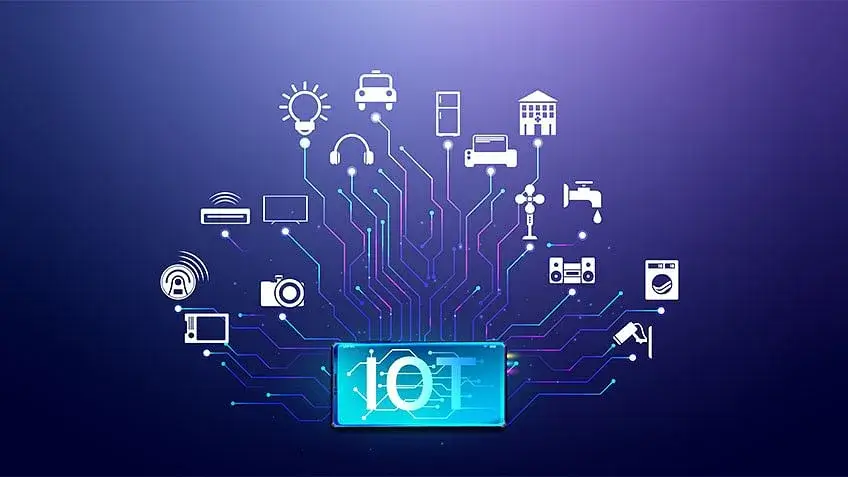The Internet of Things (IoT) and Smart Devices: A Glimpse into the Future of Connected Living
by
-
5 minutes read
-
March 30, 2021

Introduction
The Internet of Things (IoT) has rapidly transformed the way we interact with our surroundings, making our lives more convenient, efficient, and interconnected. Smart devices, ranging from thermostats to wearable gadgets, have become an integral part of modern living. In this blog post, we‘ll delve into the world of IoT and smart devices, exploring what they are, how they work, and the incredible ways they‘re shaping the future.
What is the Internet of Things (IoT)?
The Internet of Things, commonly referred to as IoT, is a network of physical objects embedded with sensors, software, and connectivity capabilities, allowing them to collect and exchange data. These objects, often everyday items, can include everything from refrigerators and cars to streetlights and industrial machinery.
The Role of Smart Devices
At the heart of the IoT revolution are smart devices. These devices are equipped with sensors and communication modules that enable them to interact with each other and with users. They can collect data, process it, and perform actions based on predefined parameters or user inputs. Let‘s take a closer look at some popular categories of smart devices and their applications:
- Smart Home Devices
- Smart Thermostats: Devices like the Nest Thermostat learn your temperature preferences and adjust settings to optimize energy consumption and comfort.
- Smart Lighting: Lights that can be controlled remotely, set on schedules, and even change color to suit your mood or needs.
- Smart Locks: Keyless entry systems that enhance security and provide convenient access control.
- Smart Appliances: Refrigerators, ovens, and washing machines that can be controlled and monitored from your smartphone.
- Wearable Technology
- Smartwatches: Track fitness, receive notifications, and even monitor health metrics like heart rate and sleep patterns.
- Fitness Trackers: Devices that monitor your physical activity, helping you stay active and healthy.
- Hearables: Wireless earbuds with advanced features like noise cancellation and voice assistants.
- Smart Healthcare Devices
- Remote Patient Monitoring: Devices that allow healthcare professionals to monitor patient‘s vital signs and health conditions remotely.
- Smart Pill Dispensers: Ensure medication adherence with automated reminders and notifications.
- Connected Vehicles
- Telematics: IoT-enabled vehicles can provide real-time data on vehicle health, location, and driving behavior.
- Autonomous Cars: Self-driving cars that rely on a vast array of sensors and connectivity to navigate safely.
How IoT and Smart Devices Work
IoT devices operate through a combination of sensors, connectivity protocols (such as Wi-Fi, Bluetooth, or cellular networks), and cloud-based platforms. Here‘s a simplified overview of the process:
- Data Collection: Sensors within the smart device collect data from their surroundings. For example, a smart thermostat might sense the room temperature and humidity.
- Data Processing: The device processes the collected data to extract relevant information and, if necessary, makes decisions based on predefined rules or algorithms.
- Data Transmission: The device transmits the data to a central server or cloud-based platform via a network connection.
- Data Analysis: The cloud platform analyzes the data, generating insights or triggering actions based on user preferences or predefined algorithms.
- User Interaction: Users can interact with the smart device through a mobile app or a web interface, enabling remote control, monitoring, and customization.
The Future of IoT and Smart Devices
The future of IoT is promising and boundless. As technology continues to advance, we can expect:
- Increased Interconnectivity: More devices will become part of the IoT ecosystem, creating a seamless web of interconnected objects.
- AI and Machine Learning Integration: AI algorithms will enhance the capabilities of smart devices, allowing them to learn from user behavior and adapt accordingly.
- Enhanced Security: As the number of connected devices grows, so does the importance of cybersecurity to protect sensitive data and prevent unauthorized access.
- Industry Transformation: IoT will continue to revolutionize industries like healthcare, agriculture, transportation, and manufacturing, driving efficiency and innovation.
Conclusion
In conclusion, the Internet of Things and smart devices have already transformed the way we live and work, and their impact will only continue to grow. As we embrace these technological advancements, we must also consider the ethical and privacy implications and ensure that the benefits of IoT are accessible to all while safeguarding our digital lives. The future is indeed bright for IoT, promising a world where everyday objects become smarter, more efficient, and more in tune with our needs and desires.